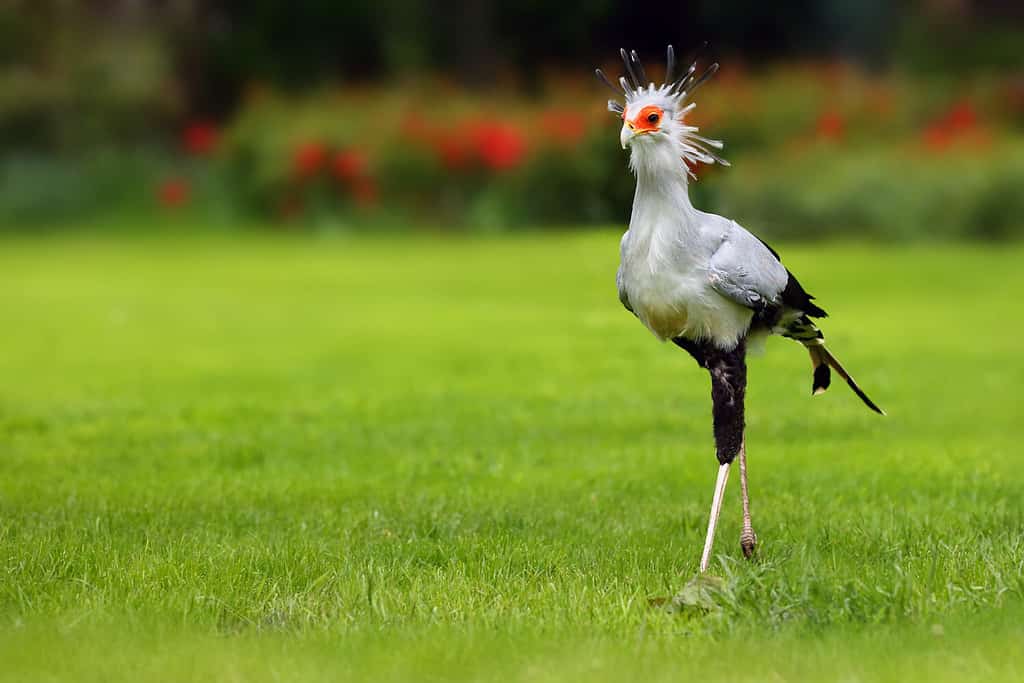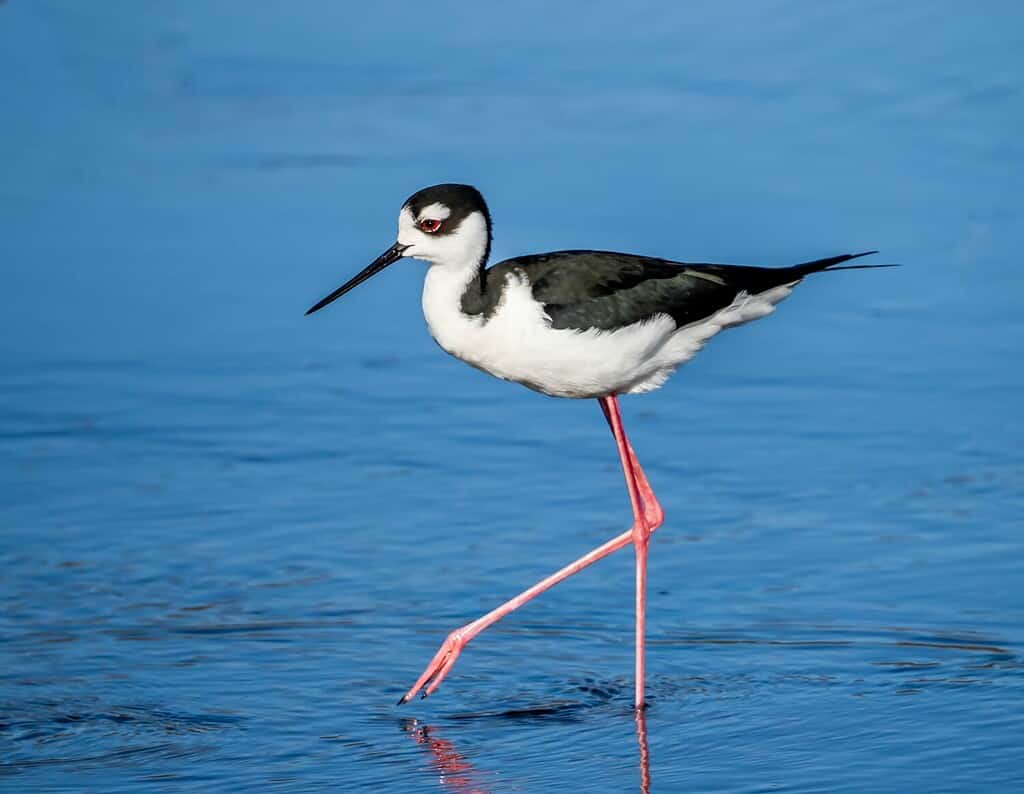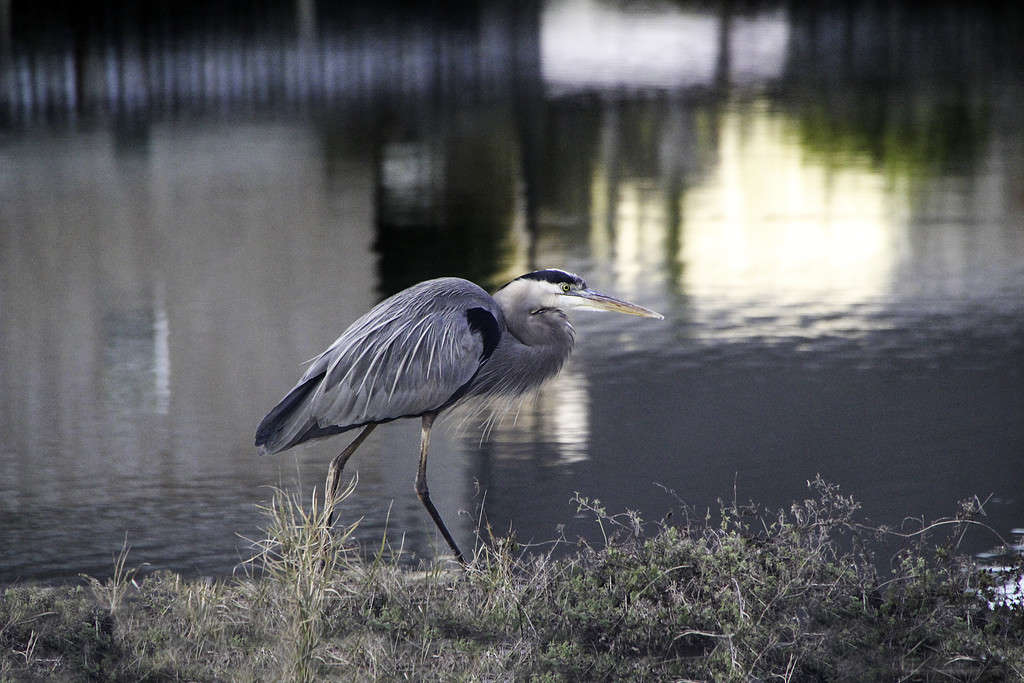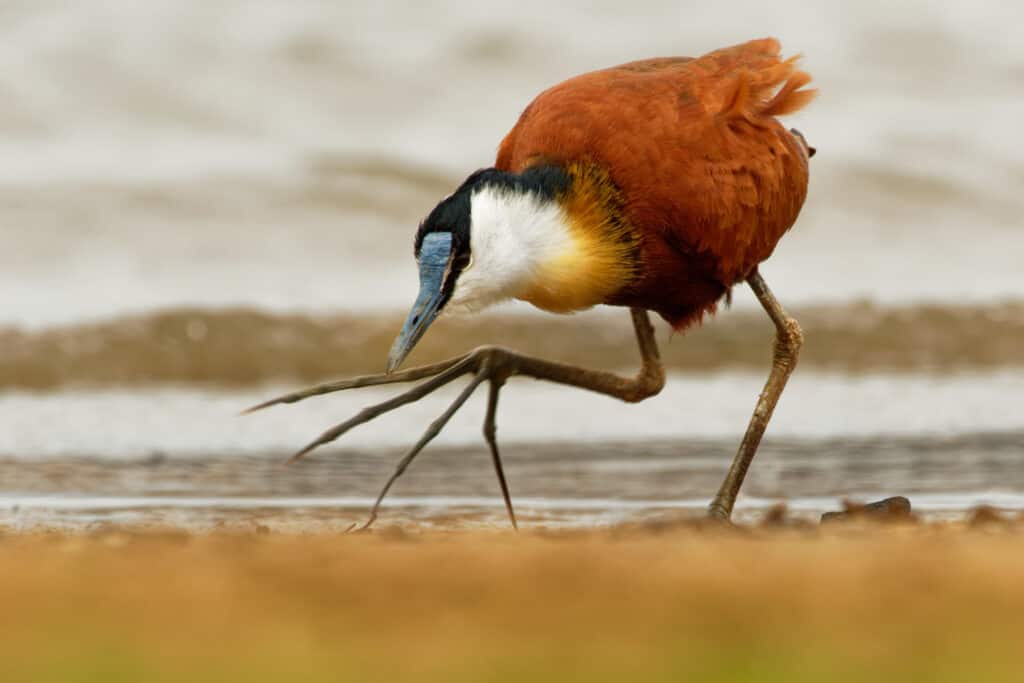Welcome to an exciting exploration of birds with long legs and diverse habitats. From wading in shallow waters to gracefully striding across open fields, birds with lengthy legs have adapted to various environments, showcasing their unique abilities. In this article, we uncover some of the most remarkable avian species with elongated limbs, revealing the places around the world where you can witness their graceful movements and fascinating behaviors. So, prepare to embark on a captivating journey as we delve into the world of birds with long legs and discover the enchanting landscapes they call home.
1. Greater Flamingo

The legs of a greater flamingo can be up to 4.6 feet long!
©Dr Ajay Kumar Singh/Shutterstock.com
The greater flamingo’s long legs are not only visually striking but also essential for their survival. These legs enable them to navigate various habitats, feed on specific food sources, and perform impressive feats, such as wading through shallow waters and flying across great distances.
The Length of Greater Flamingo Legs
One of the most iconic birds known for its long legs is the greater flamingo (Phoenicopterus roseus). These magnificent creatures boast remarkably long legs, measuring an impressive 3.3 to 4.6 feet (1 to 1.4 meters) in length. Their legs are not only eye-catching but also serve a crucial purpose in their daily activities.
Flight and Habitat
Despite their long legs, greater flamingos are excellent flyers. Their broad wingspan, reaching up to 5.9 feet (1.8 meters), allows them to soar gracefully through the sky. These birds are migratory in nature and live in various regions across the globe. They inhabit both saltwater and freshwater environments, including coastal areas, lagoons, estuaries, and salt pans.
How Their Long Legs Aid in Survival
The elongated legs of greater flamingos play a vital role in their survival. These specialized limbs enable them to wade into shallow waters, where they feed on their preferred diet of algae, small crustaceans, mollusks, and aquatic plants. By submerging their long legs in the water, they can reach the nutrient-rich food sources that other birds cannot access.
Adaptations for Feeding
The legs of greater flamingos are uniquely adapted to their feeding habits. They possess a series of specialized structures that aid in filtering out their food while preventing excess water intake. These structures include comb-like structures in their beaks and a unique tongue that acts as a pump, allowing them to filter and extract tiny organisms from the water.
Benefits Beyond Feeding
Beyond feeding, the long legs of greater flamingos serve additional purposes. They provide stability while standing on uneven or muddy terrain, allowing the birds to maintain balance. The legs also help regulate body temperature by dissipating heat through the large surface area, keeping the birds cool in hot environments.
2. Secretary Bird

The secretary bird is a skilled snake hunter. Its legs can also grow up to 4.3 feet long!
©Karel Bartik/Shutterstock.com
The secretary bird’s long legs are a defining feature of this unique species. Their legs provide them with exceptional agility, precision, and the striking power needed to subdue their prey. The secretary bird’s well-adapted legs are a testament to the incredible diversity and ingenuity of nature.
The Length of Secretary Bird’s Legs
The secretary bird (Sagittarius serpentarius) is a fascinating bird known for its incredibly long and slender legs. These remarkable appendages can reach lengths of up to 3.3 to 4.3 feet (1 to 1.3 meters), accounting for about half of the bird’s total height.
Flight and Habitat
Despite their lengthy legs, secretary birds are indeed capable of flight. However, they rely more on their legs for hunting and foraging purposes. These birds reside in the open grasslands and savannas of sub-Saharan Africa, where they roam and search for prey on foot.
Habitat and Behavior
Secretary birds inhabit a variety of habitats, including grasslands, open plains, and lightly wooded areas. They are often in regions where they can find a sufficient supply of prey, such as snakes, small mammals, birds, and insects. These birds are highly territorial, with each pair occupying a large territory year-round.
How Long Legs Aid in Survival
The long legs of secretary birds are essential to their survival, enabling them to excel at hunting and capturing prey. With their agile and precise movements, they use their legs to stomp on snakes and small mammals, delivering swift and powerful blows to immobilize their prey. Their legs also provide them with an advantage when navigating through dense vegetation and tall grasses.
Additional Benefits of Long Legs
In addition to hunting, the legs of secretary birds serve other practical purposes. Their impressive height allows them to spot potential prey from a distance, giving them a strategic advantage. Furthermore, their long legs help them dissipate heat, as they spend a considerable amount of time in areas with high temperatures.
3. Black-Necked Stilt

The legs of a black-necked stilt can grow up to 15 inches long, which is quite long for such a tiny bird!
©Jim Schwabel/Shutterstock.com
The black-necked stilt’s long legs are an adaptation that aids their survival in their wetland habitats. They exemplify nature’s remarkable adaptations and the diverse ways in which birds have evolved to thrive in their environments.
The Length of Black-necked Stilt’s Legs
The black-necked stilt (Himantopus mexicanus) is a striking bird known for its long and slender legs. These remarkable appendages can reach lengths of up to 11 to 15 inches (28 to 38 centimeters), making them longer in proportion to their body size compared to most other bird species.
Flight and Habitat
The black-necked stilt is capable of flying. They have long, pointed wings that allow them to take to the skies and migrate to different locations as the seasons change. These birds live in various habitats, including marshes, wetlands, estuaries, and salt pans across North and South America.
Habitat and Behavior
Black-necked stilts prefer shallow freshwater or brackish habitats, such as marshes, ponds, and mudflats. They often wade in water, using their long legs to navigate through the shallows while searching for food. These birds are highly social and exist in small to large flocks, especially during breeding season.
How Long Legs Aid in Survival
The long legs of black-necked stilts are crucial to their survival, providing them with several advantages. Firstly, their leg length enables them to wade through shallow waters, allowing them to reach prey such as small fish, crustaceans, insects, and aquatic invertebrates. Their long legs also allow them to traverse muddy or marshy terrain with ease, giving them access to a wider range of feeding grounds.
Additional Benefits of Long Legs
Black-necked stilts’ long legs offer additional benefits beyond foraging. Their elevated stance provides them with a better vantage point, allowing them to spot potential predators or other birds competing for resources. Additionally, the stilts’ long legs help them regulate body temperature by keeping their bodies above the water or mud, which can be particularly beneficial during hot weather.
4. Great Blue Heron

The
great blue heron
has legs that can easily grow longer than 4 feet!
©Jill Meyer Millet/ via Getty Images
The great blue heron’s long legs are an integral part of their survival strategy. They exemplify their exceptional adaptation to their watery habitats and their ability to thrive in diverse environments.
The Length of Great Blue Heron’s Legs
The great blue heron (Ardea herodias) is a majestic bird with an impressive stature and long legs. These magnificent creatures have legs that can grow to be around 46 to 52 inches (117 to 132 centimeters) in length. These lengthy appendages contribute to their graceful appearance and play a crucial role in their survival.
Flight and Habitat
The great blue heron is fully capable of flight. With their broad wingspan, which can measure up to 6 feet (1.8 meters), they can soar through the sky with ease. Great blue herons have a wide range of habitats, including wetlands, marshes, swamps, estuaries, lakes, and riverbanks across North America.
Habitat and Behavior
Great blue herons are primarily in freshwater and coastal habitats, where they can easily access their main food source: fish. They are solitary birds, often seen standing motionless near the water’s edge or wading through shallow waters in search of prey. These birds have patient hunting techniques and an ability to blend seamlessly into their surroundings.
How Long Legs Aid in Survival
The long legs of the great blue heron serve them in several ways, contributing significantly to their survival. Firstly, their leg length enables them to wade through deep waters without getting their body wet. This allows them to approach fish stealthily and strike with precision when hunting. Their long legs also provide stability and balance, allowing them to navigate through uneven or slippery terrain.
Additional Benefits of Long Legs
Beyond hunting, the great blue heron’s long legs offer additional benefits. Their elevated stance provides them with an advantageous vantage point, allowing them to spot prey from a distance. Their long legs also aid in thermoregulation, as they can lift their bodies above the water or mud to stay cool in hot weather. Additionally, the height provided by their legs helps them avoid potential predators and increases their visibility during territorial displays.
5. African Jacana

The African jacana has enormous feet and long legs.
©Martin Pelanek/Shutterstock.com
The African jacana’s long legs are a remarkable adaptation that allows them to thrive in their watery habitats. These legs enable them to walk on water, navigate through floating vegetation, and access food and nesting sites.
The Length of African Jacana’s Legs
The African jacana (Actophilornis africanus) is a fascinating bird known for its exceptionally long legs. These unique creatures possess legs that can grow to be around 10 to 12 inches (25 to 30 centimeters) in length. These elongated limbs play a crucial role in their survival and contribute to their remarkable adaptation to their watery habitats.
Flight and Habitat
The African jacana is capable of flight. While their legs are their most prominent feature, these birds also have wings that allow them to take to the air. African jacanas live in various wetland habitats across sub-Saharan Africa, including lakes, swamps, marshes, and slow-moving rivers.
Habitat and Behavior
African jacanas are well adapted to their aquatic environments. They inhabit areas with abundant floating vegetation, using these plants as platforms to walk on water. These birds have an impressive ability to navigate across lily pads and other aquatic vegetation, using their long legs to distribute their weight and avoid sinking. They are highly territorial and defend their chosen territories from other jacanas.
How Long Legs Aid in Survival
The long legs of the African jacana serve multiple functions, contributing significantly to their survival. Firstly, their leg length allows them to distribute their body weight effectively, preventing them from sinking into the water or vegetation. This adaptation enables them to effortlessly walk on lily pads and other floating plants without getting wet, providing access to food sources and nesting sites.
Additional Benefits of Long Legs
In addition to their walking abilities, the African jacana‘s elongated legs offer additional advantages. Their elevated stance provides them with an advantageous vantage point, allowing them to spot predators or potential threats from a distance. Furthermore, these long legs aid in thermoregulation, as they can lift their bodies above the water or vegetation to cool down in hot weather. Their legs also aid in courtship displays, with males using their elongated limbs to perform intricate dances to attract females.
The photo featured at the top of this post is © Ondrej Prosicky/Shutterstock.com
Thank you for reading! Have some feedback for us? Contact the AZ Animals editorial team.







